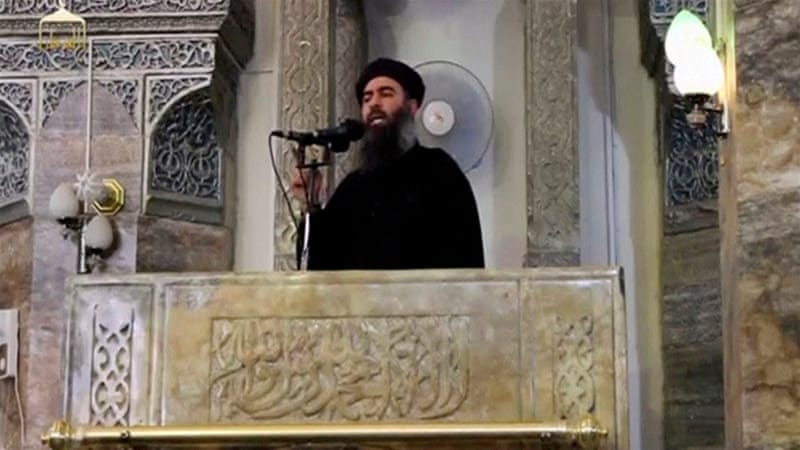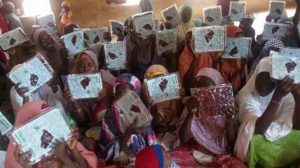Islam is not an inherently violent faith, but it has been exploited by extremists who have twisted the verses to suit their political goals.
Muslims need to confront these extremist interpretations and reclaim Islam. We need our own enlightenment.
Extremism is an exploitative process; religious, not religious, political or apolitical, it will find a way to give you clarity amid complexity. The feeling is powerful and all-encompassing
What we are fighting, in Islamist extremism , is an ideology. It is an extreme doctrine. And like any extreme doctrine, it is subversive. At its furthest end it seeks to destroy nation-state to invent its own barbaric realm. And it often backs violence to achieve this aim – mostly violence against fellow Muslims – who don’t subscribe to its sick worldview. But you don’t have to support violence to subscribe to certain intolerant ideas which create a climate in which extremists can flourish. Ideas which are hostile to basic liberal values such as democracy, freedom and sexual equality. Ideas which actively promote discrimination, sectarianism and segregation. Ideas – like those of the despicable far right – which privilege one identity to the detriment of the rights and freedoms of others. And ideas also based on conspiracy: that Jews exercise malevolent power; or that Western powers, in concert with Israel, are deliberately humiliating Muslims, because they aim to destroy Islam. In this warped worldview, such conclusions are reached – that 9/11 was actually inspired by Mossad to provoke the invasion of Afghanistan; that British security services knew about 7/7, but didn’t do anything about it because they wanted to provoke an anti-Muslim backlash. And like so many ideologies that have existed before – whether fascist or communist – many people, especially young people, are being drawn to it. We need to understand why it is proving so attractive.
Allah says:
“…Whosoever kills an innocent human being, it shall be as if he has killed all mankind, and whosoever saves the life of one, it shall be as if he had saved the life of all mankind…” Qur’an 5:32
“Islamic terrorists!” “Muslim fundamentalists!” “Extremists!” “Radical Islamists!” These are just some labels that have been wrongly applied to Muslims and certain Muslim groups in recent years.
The media’s portrayal of Islam often misleads those whose knowledge of the religion is limited, into making negative assumptions about this very peaceful and tolerant way of life.
Is it then, any wonder that most people associate Islam with terrorism?
The problem of ignorance is highlighted by a survey which revealed that more than one in three Australians admit to knowing nothing about Islam and its followers.
“Those with the least knowledge and personal contact with Muslims were the most likely to feel threatened by Islam,” said Dr Dunn, who was commissioned by the Australia-Indonesia Institute to carry out the study.
The prevalence of media bias and ignorance regarding Islam can be countered by understanding Islam through its proper teachings. That means referring to the Qur’an (which Muslims believe to be the word of God) and the authentic sayings of the Prophet Muhammad (peace be upon him). Through the proper understanding of these teachings, one will discover Islam to be completely against any form of extremism.
How the Qur’an can be misunderstood
When reading through the Qur’an or the sayings of the Prophet (peace be upon him), one must understand the context in which the wording applies. The following verse of the Qur’an is a favourite amongst those seeking to mislead people about Islam:
“And kill them wherever you find them, and expel them from where they expelled you, as persecuting people to sway them from God’s Religion is worse than killing. But do not fight them at the Sacred Mosque, unless they fight you there. But if they do fight you, then slay them; This is the recompense of the disbelievers.” Qur’an 2:191
On occasions, this verse has been dangerously trimmed down to the following:
“And kill them wherever you find them…” Qur’an 2:191
The obvious question is, “Kill who?”. To answer this question, one should read the verses before and after verse 2:191.
“And fight in the way of Allah those who fight with you, and do not exceed the limits, surely Allah does not love those who exceed the limits.“ Qur’an 2:190
The above verse mentions fighting as a means of self defence (i.e. with those who fight you). The verse after 2:191 is:
“But if they cease, Allah is Oft-forgiving, Most Merciful.” Qur’an 2:192
These verses were revealed at a time when the Muslims had been expelled from their homes on account of their faith. They endured more than ten years of persecution and eventually had to flee to a safe land.
The above verses were referring to the Arab pagans of Mecca during the Prophet’s time, who oppressed the Muslims and planned to attack them where the Muslims sought refuge.
Hence, the above verse can only be applied in such circumstances.
This example demonstrates that verses in the Qur’an should be understood in their proper context since verses were revealed in stages in relation to particular situations, over a period of 23 years. It is also important to note that the Qur’an was revealed in Arabic. Therefore, translations into different languages may be misleading and/or inaccurate.
Permissible Warfare/Fighting
There can be no doubt that Muslims have a legitimate right to fight against aggression or when oppressed.
Islam teaches that warfare is permitted in order to preserve the wellbeing of the community or to prevent oppression from spreading – this may be in the context of defensive or offensive warfare depending on the particular situation. Islam, just like any ‘way of life’ that wants to ensure its survival, has the right to defend itself when war is declared against it. In the Qur’an (22:39) we read:
“To those against whom war is made, permission is given to fight, because they are wronged.”
However, when the enemy ceases its hostility, Muslims are commanded to cease fighting.
“And if they incline to peace, then incline to it and trust in God; surely He is the All-Hearer, the All-Knower.” Qur’an 8:61
Abu Bakr (may God be pleased with him), Prophet Mohammad’s closest friend and first successor, spoke of the Islamic approach to war by highlighting the following.
In the battlefield, one should not:
commit treachery
mutilate the dead
deviate from the right path
kill a woman, child or aged man
harm or burn trees, especially the fruitful
slay the enemy’s flock, except for food
harm those who devote their life to worship
As we read in verse 2:190, Allah commands Muslims not to go to extremes by saying, “Do not transgress the limits.” A situation of war is no excuse to go beyond boundaries. Islam teaches the avoidance of blind retaliation.
“And let not the hatred of others make you avoid justice. Be just: that is nearer to righteousness.” Qur’an 5:8 unlike
Now therefore, kill every male among the little
ones, and kill every woman who has known man
intimately. But all the girls who have not known
man intimately, spare for yourselves. (Numbers
31:17-18)
“Do not think that I have come to send peace on
earth. I did not come to send peace, but a sword. I
am sent to set a man against his father, a
daughter against her mother, and a daughter-in-
law against her mother-in-law” (Matthew
10:34-35)
But these enemies of mine, who did not want me to reign
over them, bring them here and slay them in my
presence. (Luke 19:2-27)
Terrosim in perspective
The problem with putting terrorism into perspective is that there is no agreed-upon definition of what constitutes “terrorism”. Also, terrorism takes many forms, as the following examples illustrate.
Robert Fisk, from The Independent, writes: “Israel and Israel’s militia allies (on 16 September 1982) started their three-day orgy of rape, knifing and murder in the Palestinian refugee camps of Sabra and Shatila that cost 1,800 lives. It followed an Israeli invasion of Lebanon designed to drive the PLO (Palestine Liberation Organisation) out of the country and given the green light [by the United States] which cost the lives of 17,500 Lebanese and Palestinians, almost all of them civilians.”
According to Professor Noam Chomsky, “It’s uncontroversial that the United States is a leading terrorist state. In fact, it’s the only state that was condemned for international terrorism by the highest bodies: the International Court of Justice in 1986.”
Similarly, “The horrific massacre of 8,000 Muslims – some unarmed – at Srebrenica in 1995 never led to a stream of pieces about the violence and repressive tendencies of Christianity.” – William Dalrymple, The Independent UK.
“The carnage wrought by Western, ostensibly Christian, leaders over the last six decades – including a world war and a cold war, a Holocaust, two atomic bombs, repression of wars of independence, the fuelling of proxy wars, nuclear brinksmanship, and the support of dictators and state and non-state terrorists – makes it spurious to view Islam as a more inherently violent religion or civilisation.” – Rama Mani (Geneva Centre for Security Policy)
There are many other examples of both Jewish and Christian terrorism, however, we must never generalise and call all Christians and Jews terrorists. Similarly, we should not put all Muslims on trial but only those that committed the crime should be judged.
Islam Denounces Terrorism
The act of inciting terror in the hearts of defenceless civilians, the wholesale destruction of buildings and properties, the bombing and maiming of innocent men, women and children are all forbidden and detestable acts according to Islam and the Muslims. This is regardless of any type of terrorism, including western state-sponsored terrorism which has killed, injured and displaced infinitely more people than all other types of terrorism.
If an individual Muslim were to commit an act of terrorism, this person would be guilty of violating the laws of the very religion they claim to follow – Islam. Would it be fair to condemn all Muslims as a result, when the religion itself is against such acts? Muslims follow a religion of submission to God, peace, mercy, and forgiveness. The vast majority have nothing to do with the violent events some – notably the media – have associated with Muslims. Islam is not a religion of extremism.
“Allah does not forbid you from showing kindness and dealing justly with those who have not fought you about religion and have not driven you out of your homes. Allah loves those who are just.” Qur’an 60:8
WE ARE NOT EXTREMIST NOR ARE WE FANATICS
Research work
source: wikepedia
Nafysah @.knowislam.com.ng.





![Mohammed bin Salman named Saudi Arabia's crown prince Mohammed bin Salman, 31, was also named deputy prime minister [File: Hassan Ammar/AP]](https://www.aljazeera.com/mritems/imagecache/mbdxxlarge/mritems/Images/2017/6/21/1c6626de6953474e8f211cd7dc379ba3_18.jpg)















